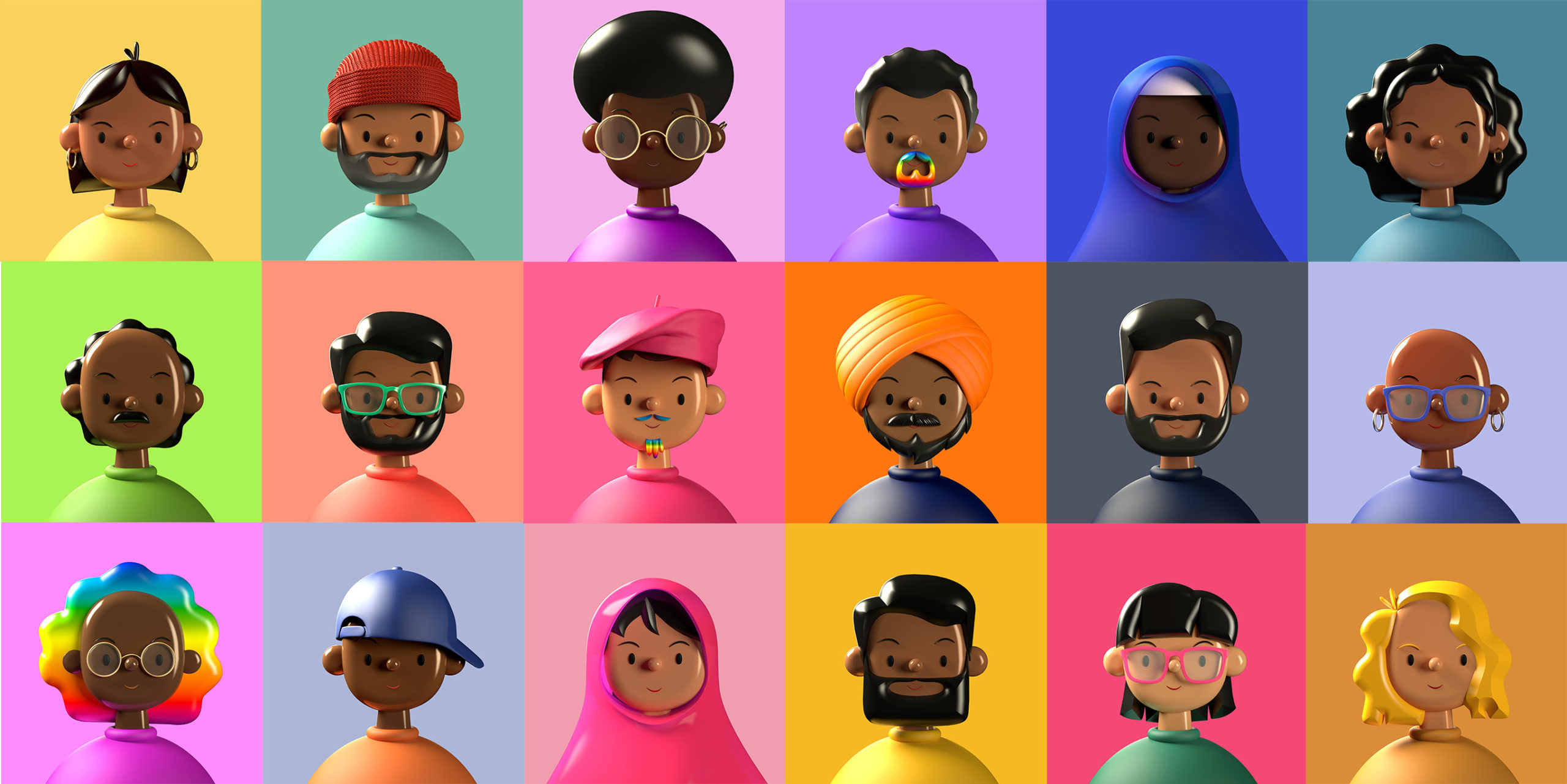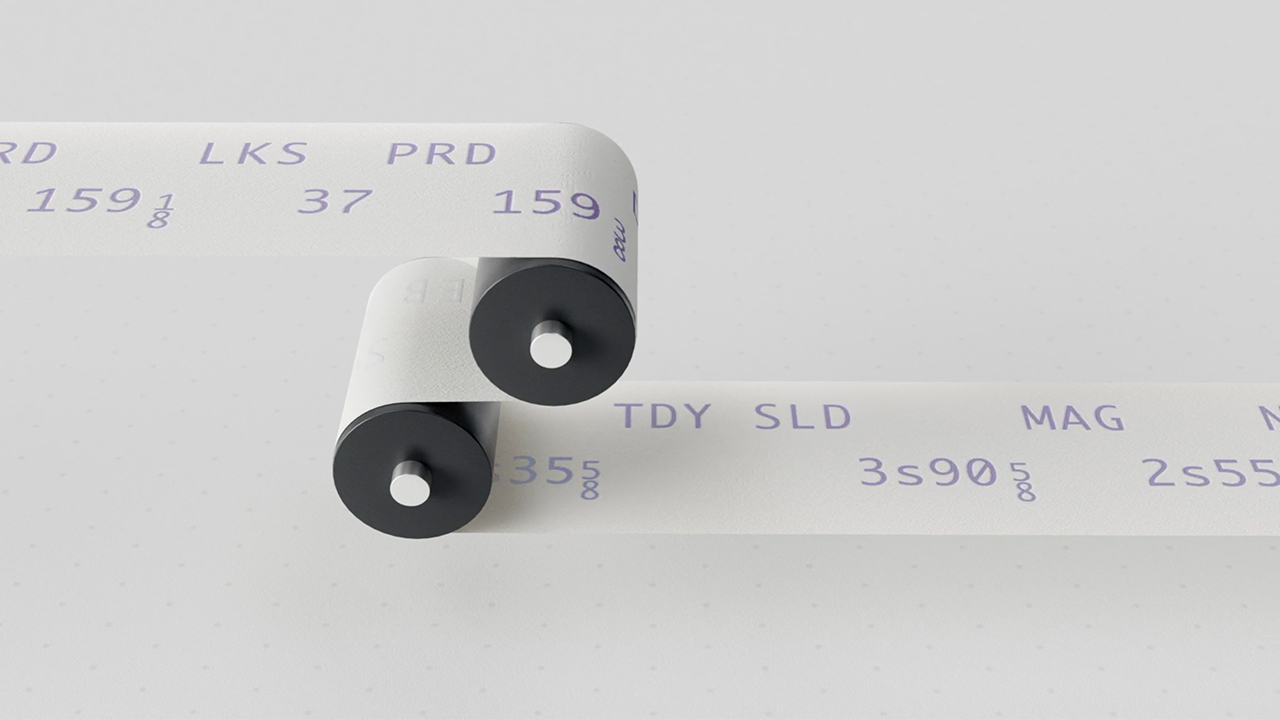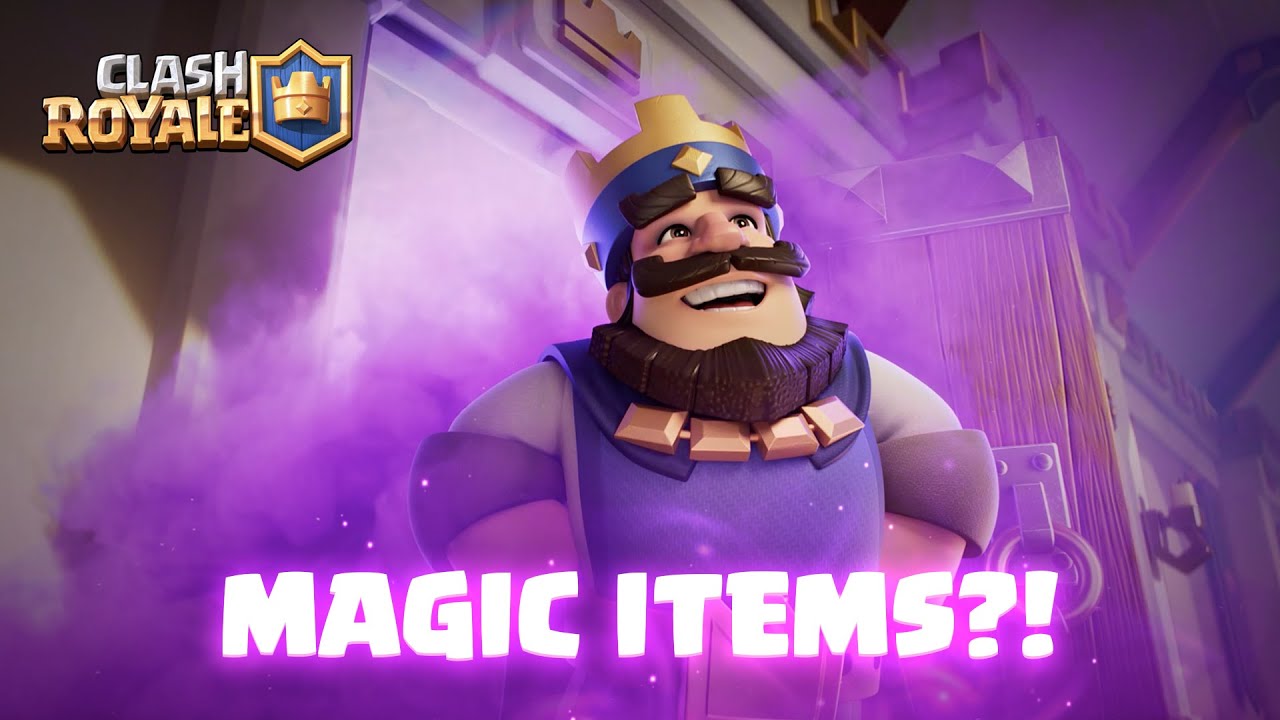Bomper pushed C4D’s character tools to make an animated short about a round of drinks gone horribly wrong.
By Meleah Maynard
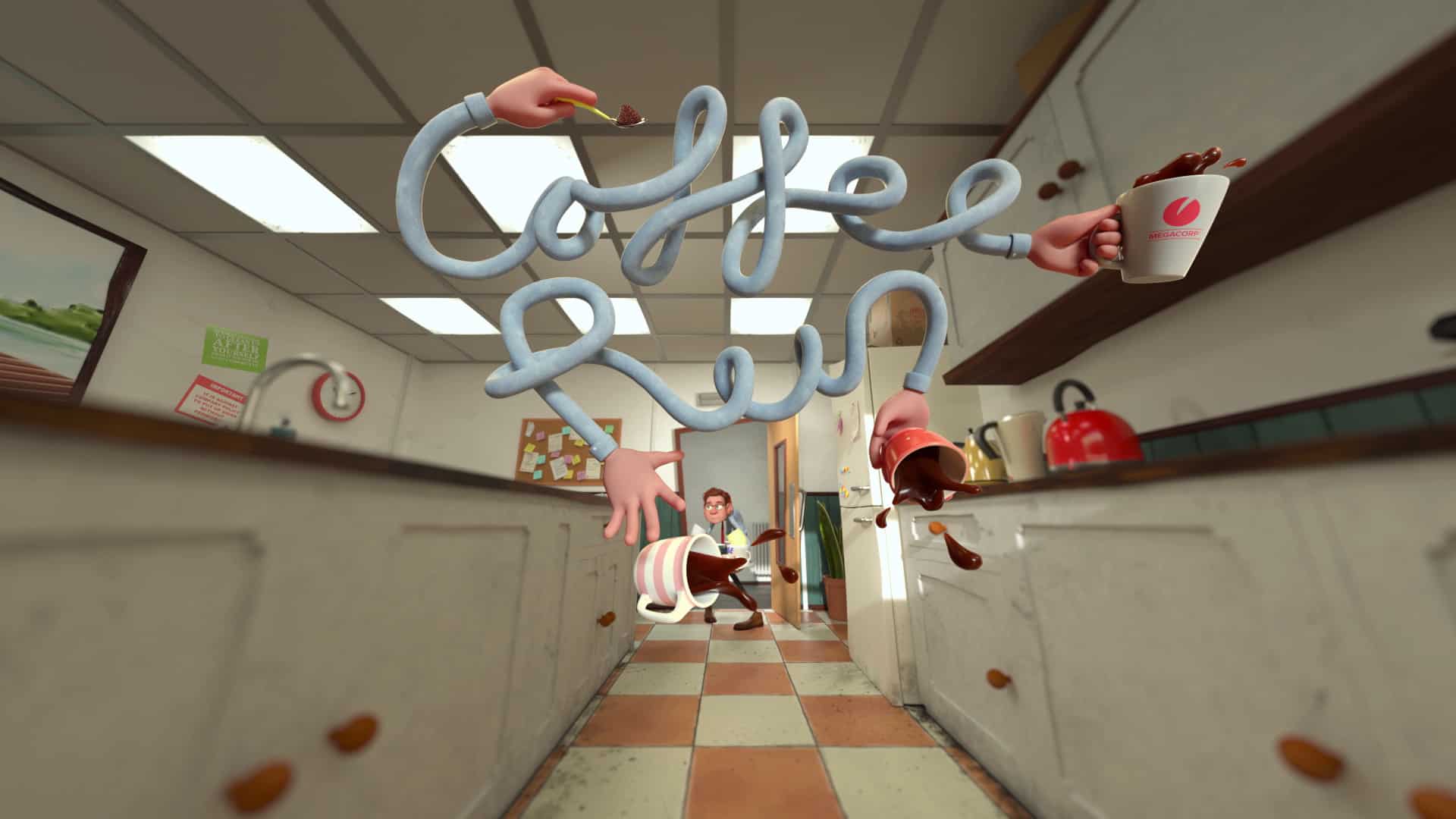
In the US, getting a cup of coffee from the office kitchen is usually an every-person-for-themselves sort of affair. But in the UK, it’s much more common for people to take turns making a round of hot drinks for everyone. Welsh CGI studio, Bomper, recently released short film, Coffee Run, captures how calamitous things can get when a colleague’s attempt to make the drink run goes wrong in every way imaginable.
Bomper’s first standalone short, Coffee Run, was made entirely in-house using Cinema 4D, ZBrush, Houdini, Substance Designer and Octane. “Curiosity and experimentation are a big part of the culture at Bomper,” says Executive Creative Director Emlyn Davies. We needed a project to challenge our skills and test how robust Cinema 4D could be for high-end character animation, so we decided to do a 30- to 90-minute film ourselves.
Based in South Wales, Bomper is known for creating everything from hyper-real CG visuals to hand-crafted animation for advertising, branding and broadcast. But the studio has always had an underlying passion for original storytelling. So they opened up the brief to all staff members to get a breadth of perspectives for the film. And then, for simplicity’s sake, they chose an idea that was intentionally based on one character in a single environment, save for a short office scene.
“Depending on who you ask in the studio, the film is either a fully functional piece, or the closest you can get to a documentary based on experience while having a character with squiggly spaghetti arms,” Davies says. Over time, the film expanded to three minutes as the whole team worked on it during gaps between client projects for a little over a year. It was nice to have the opportunity to try new things while testing out a new production pipeline for 3D character animation. Davies says. “This journey has been absolutely amazing, and we’ve learned so much for future animation shorts and commercials.”
Considering Every Detail
Doing a short film as a studio was a great opportunity for Bomper’s team to take on different roles from writing the script and designing the characters to modeling, rigging and animating. After coming up with a basic storyline and script, they decided on a cartoon-like style within the realistically lit kitchen, inspired by film such as Hotel Transylvania. They used Cinema 4D to build a robust rig that would allow the character to move, squash and stretch in a 2D cartoon-animation style.
But as they talked about how the character would potentially fumble around while trying to make drinks for his workmates, they realized they needed to give more content to the story. So they came up with a short intro set in the office, where they briefly introduced the female boss. As the main character attempts to sneak off and get himself a quick drink, she spots him and thrusts a tray teetering with mugs into his hands before pointing to an elaborate list on the wall detailing how everyone likes their drink to be made. That might sound like fiction, but Bomper has a similar list of everyone’s orders posted in the studio’s kitchen, too.
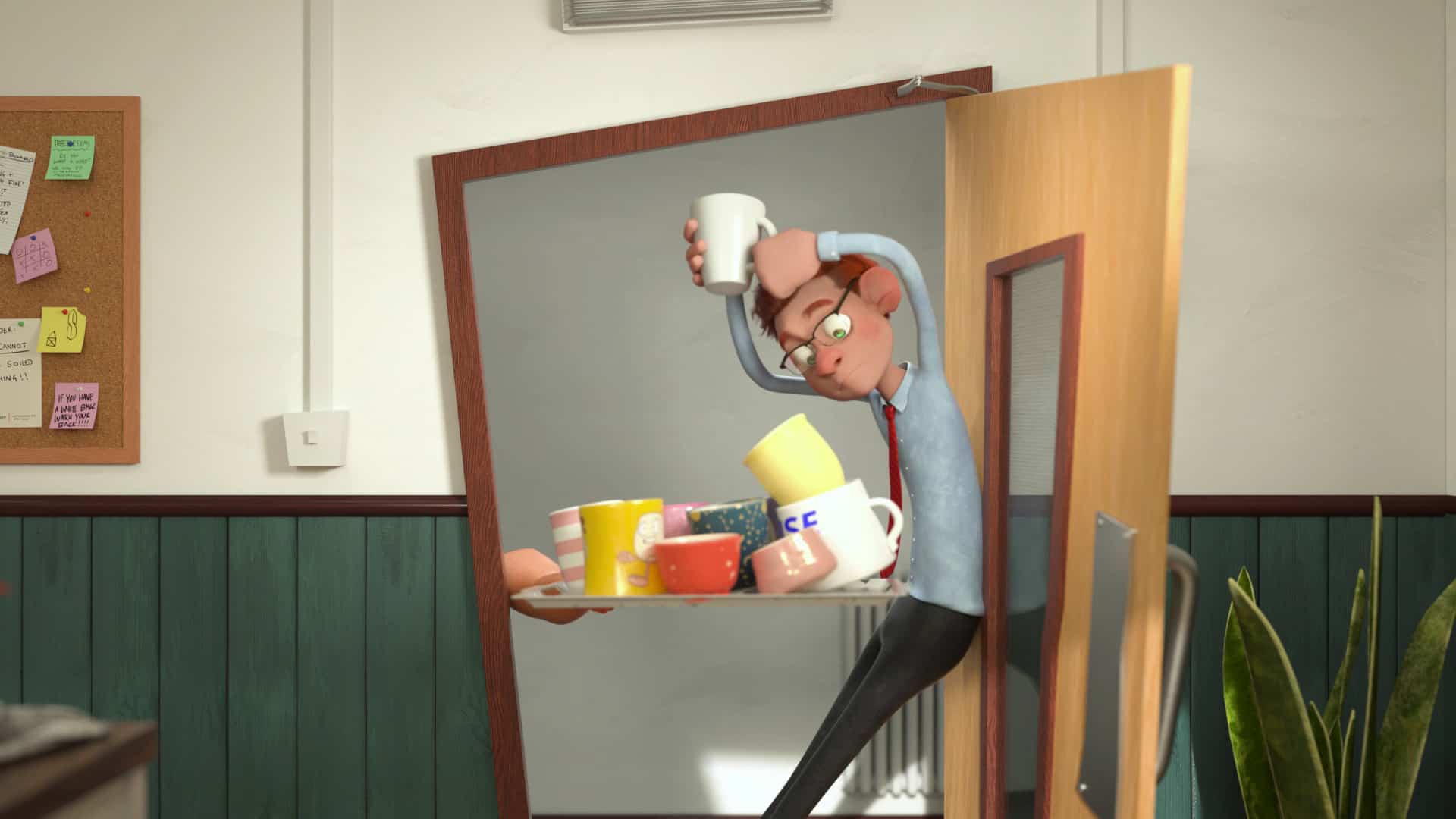
For contrast, they made the office scene dark as opposed to the bright, warm kitchen. Then they had to figure out the boss character, for whom they had only intended to model, rig and texture one arm for a brief shot. “I can’t remember who suggested we make her into a silhouette, but it shaved off a lot of time,” says 3D animator Claire Hodges, who used the 2D software RoughAnimator for the boss character. Background for the scene was painted in Photoshop, and lighting, compositing and other finishing touches were done with a combination of C4D and After Effects.
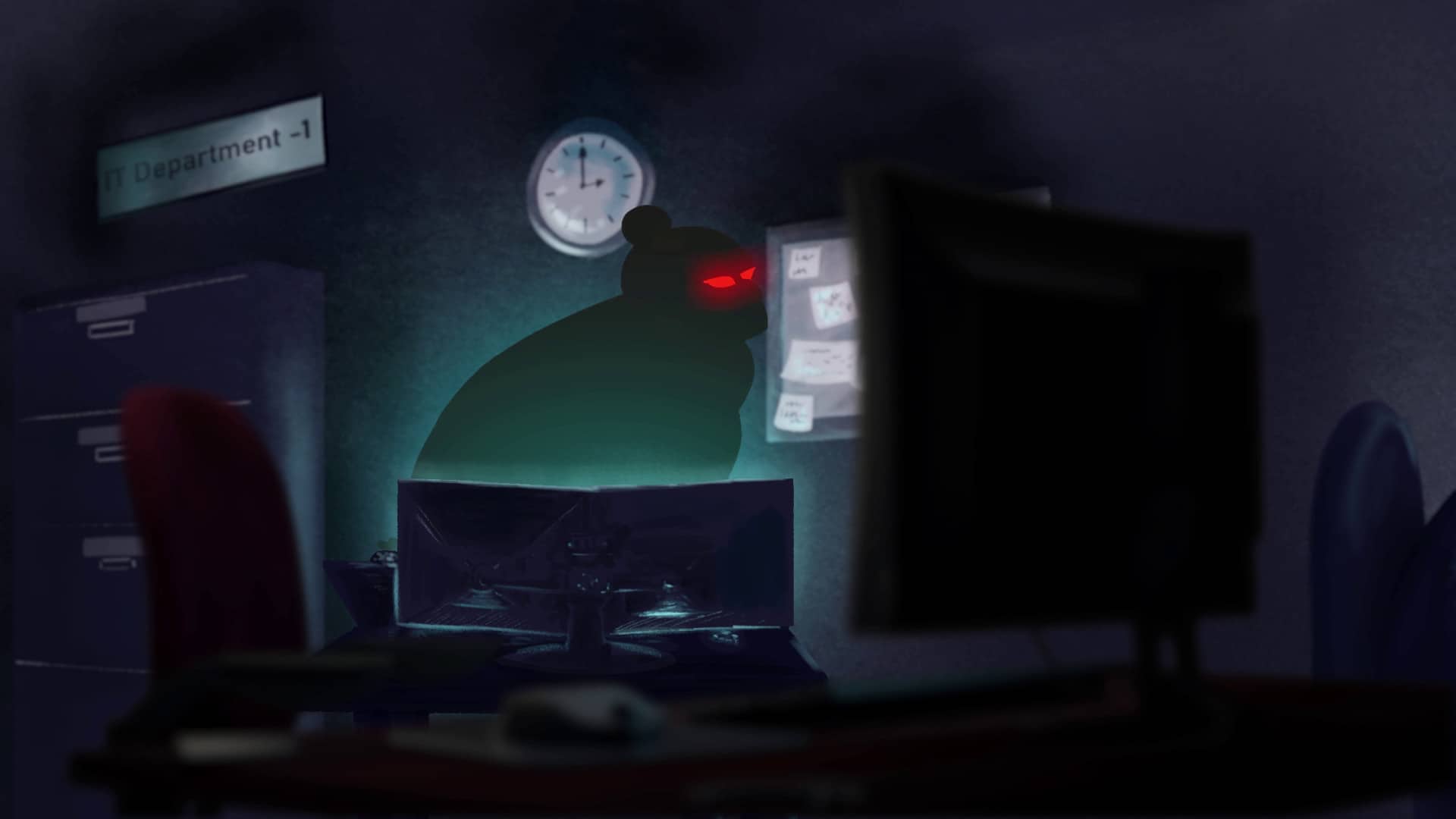
Collaborating on the Main Character
After creating an animatic, the team broke the story down in layout into shots and scenes and figured out all of the assets they would need, right down to each individual mug, which are based on the team’s actual mugs, creating some of the film’s Easter eggs. C4D and ZBrush, or a combination of both, were used for modeling and sculpting. And all of the character animation was handled in Cinema 4D, while hair and liquids simulations were done in Houdini.
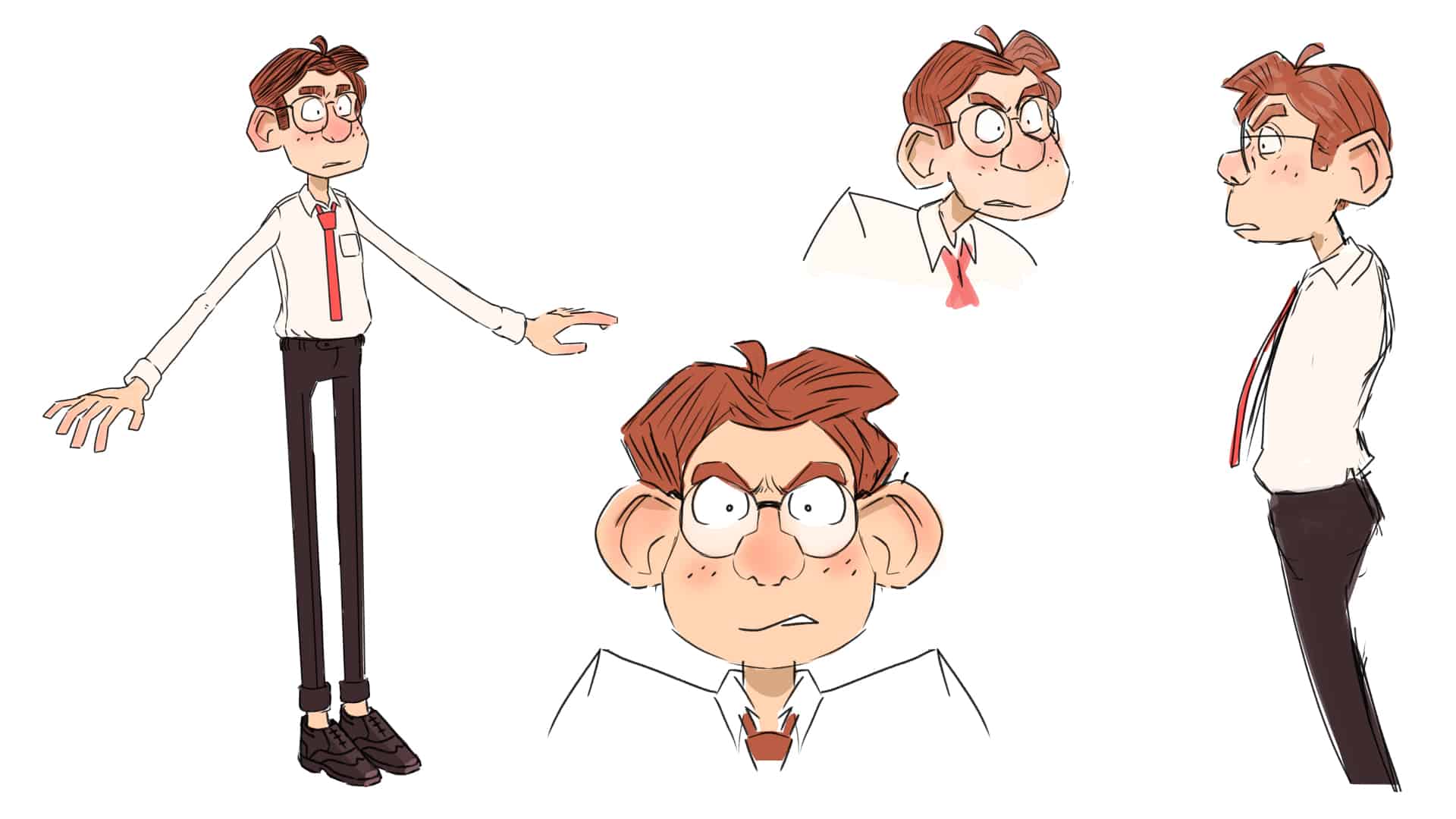
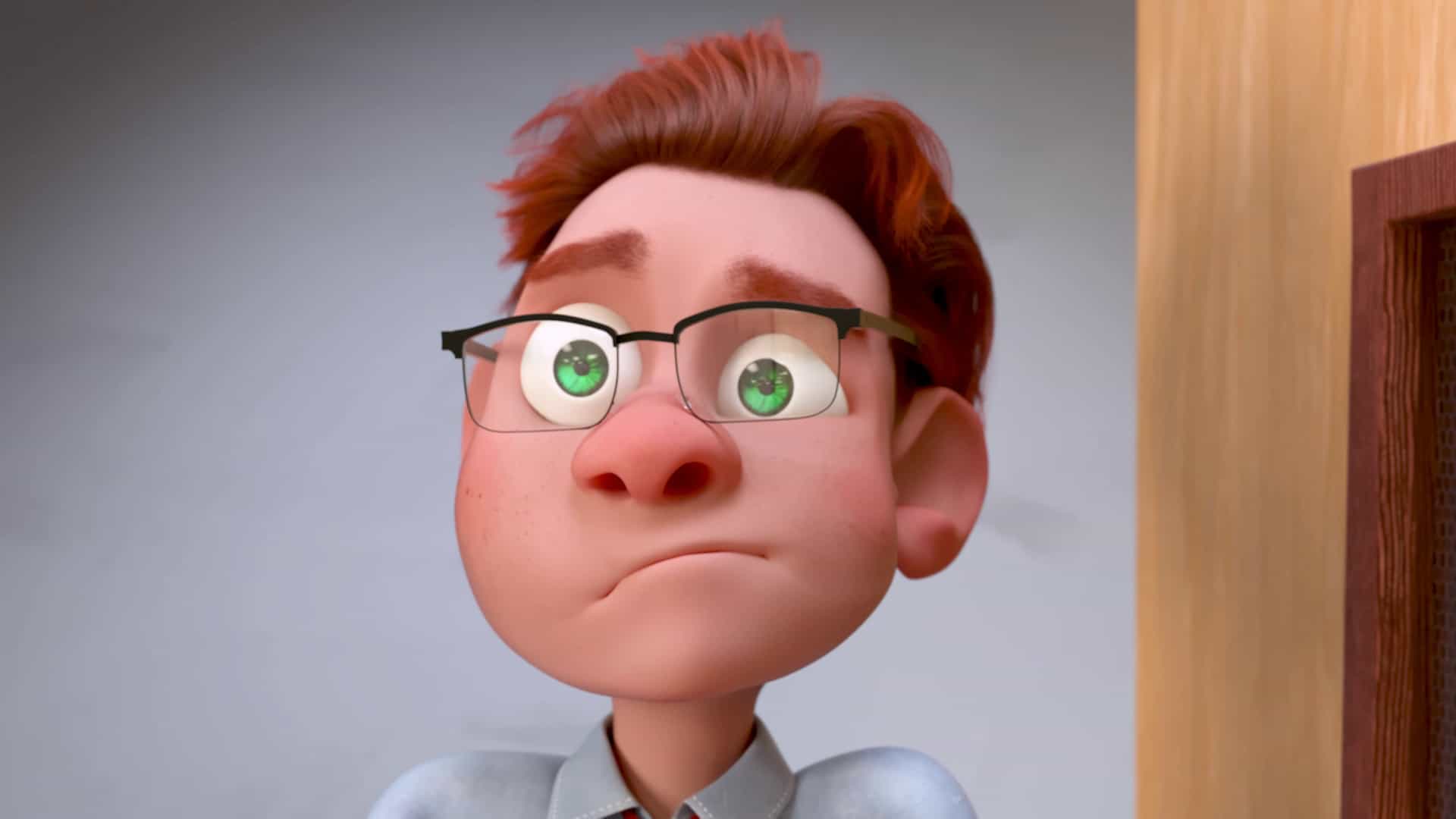
Getting the main character right was the primary collaborative effort for the team. Over time, his look evolved quite a bit from the doodles they originally started with. Bomper concept artist, Josh Hicks, who co-directed the film with Davies, drew up the final, which was imported into ZBrush where character modelers, Tara Mardell and Gareth Beedie, sculpted a high-res version that was adapted for animation in Cinema 4D.
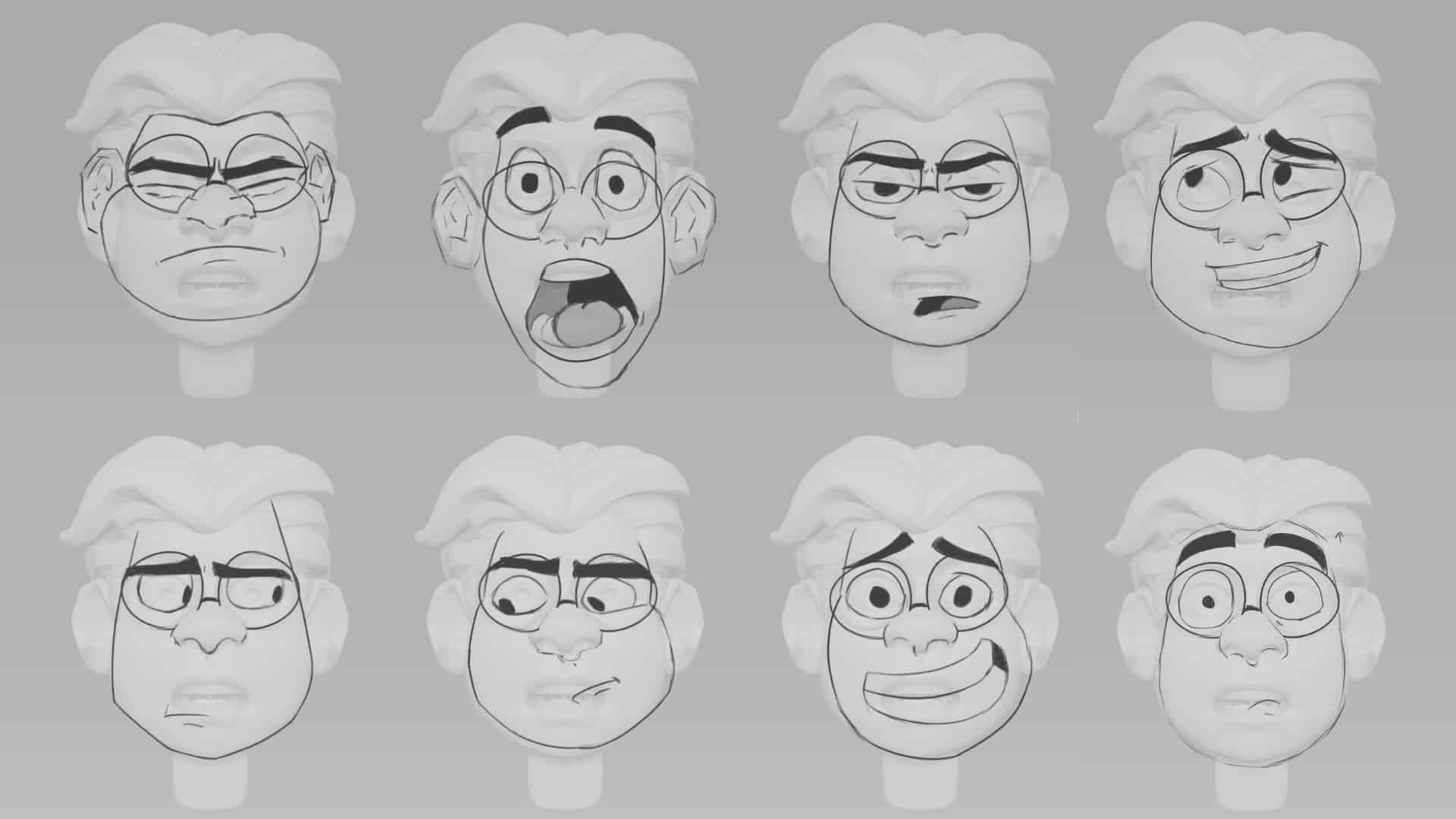
Hodges loves to draw, so she took on the job of coming up with a load of different expressions for the character. These were key to shaping the model and figuring out how the make the rig, which was built by Bomper’s Alan Towndrow. Because Alan was learning rigging as he worked on the film, the team also enlisted the help of two experienced C4D riggers and animators, Gene Magtoto and Gary Abrahart, who shared their knowledge on rigging bendy limbs and other techniques.
“When you’re creating an expression sheet, I find you want a range of poses, from something subtle to an extreme squash-and-stretch face to test the limitations of the character,” Hodges says, explaining how they took a screenshot of the base mesh in ZBrush and duplicated it many times for her to draw over. Doing that helps her better understand the proportions and volumes of the face she’s working with. “I draw inspiration from watching a lot of cartoons and making silly faces in the mirror,” she says, “because even when you’re creating something cartoony, it’s important to understand how the face works when making different expressions.” Once the poses were drawn, the facial expressions were sculpted to create the pose morphs for each extreme pose. “We learned a lot in this stage, initially building way too many face expressions and not drilling down on the key extreme poses, resulting in some lost production time,” Davies recalls.
Hodges and Towndrow were the sole animators on the short. They divided up the shot list between them, so they could pick their favorites. To ground the character’s movements in reality, they each acted out various scenes. (Watch three of the character animation reference
videos here – Reference1 Reference2 Reference3)
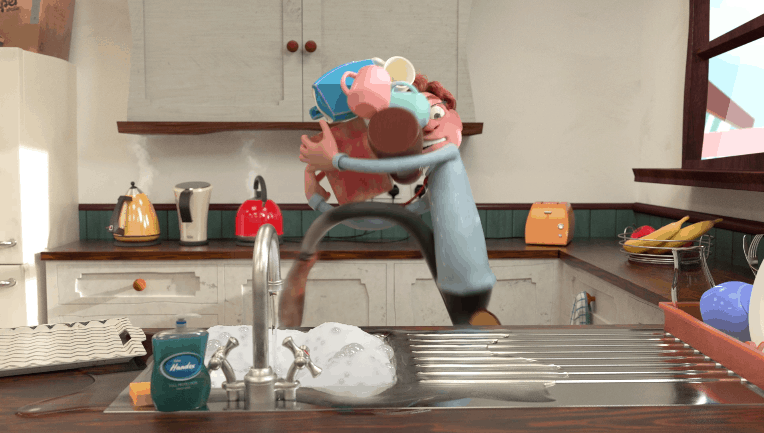
Learning, Experimenting and Troubleshooting
Though Bomper uses Cinema 4D as a main tool, this was the first time they’d used it so extensively for a project of this type. Using C4D’s pose morphs, they were able to create animation smears to help give the film its cartoony look. When they ran into trouble, help was always available on Cinema 4D and Octane forums, and they sent files to an Octane/C4D plugin developer for some quick assistance on several occasions.
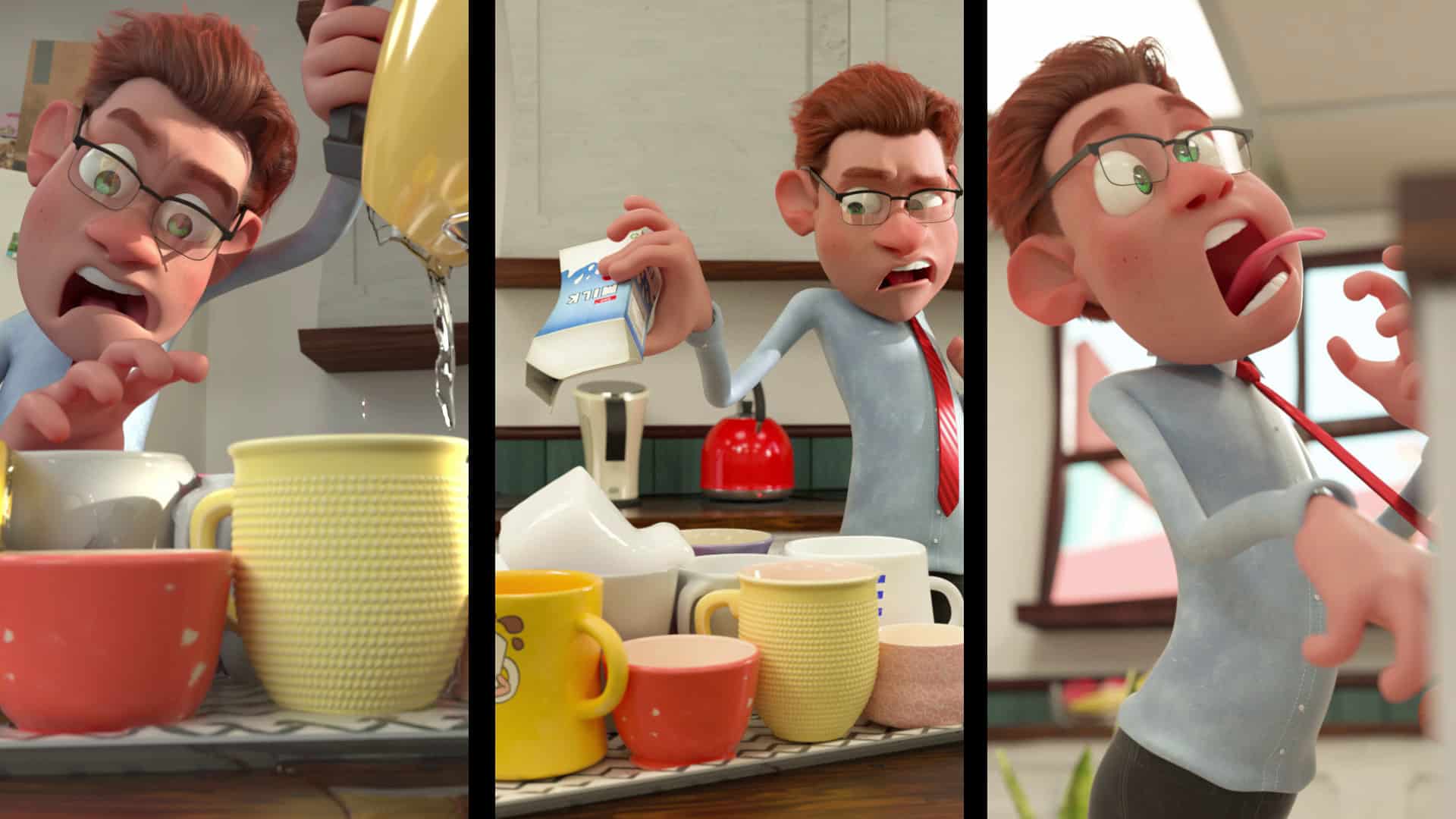
Bomper Technical Director, Colin Wood, uses Houdini and Cinema 4D regularly, but found it challenging to simulate the main character’s hair. When the team decided to simulate the hair for every single shot, he opted to use Houdini’s vellum solver, which was new at the time and did a great job. “Going forward, though, I would definitely put more time into building post-process tools for the hair simulation that would allow the animation team to dive in and start working their magic,” he says. “This would not only prevent high volumes of simulations; it would give us a lot more control over the final look.
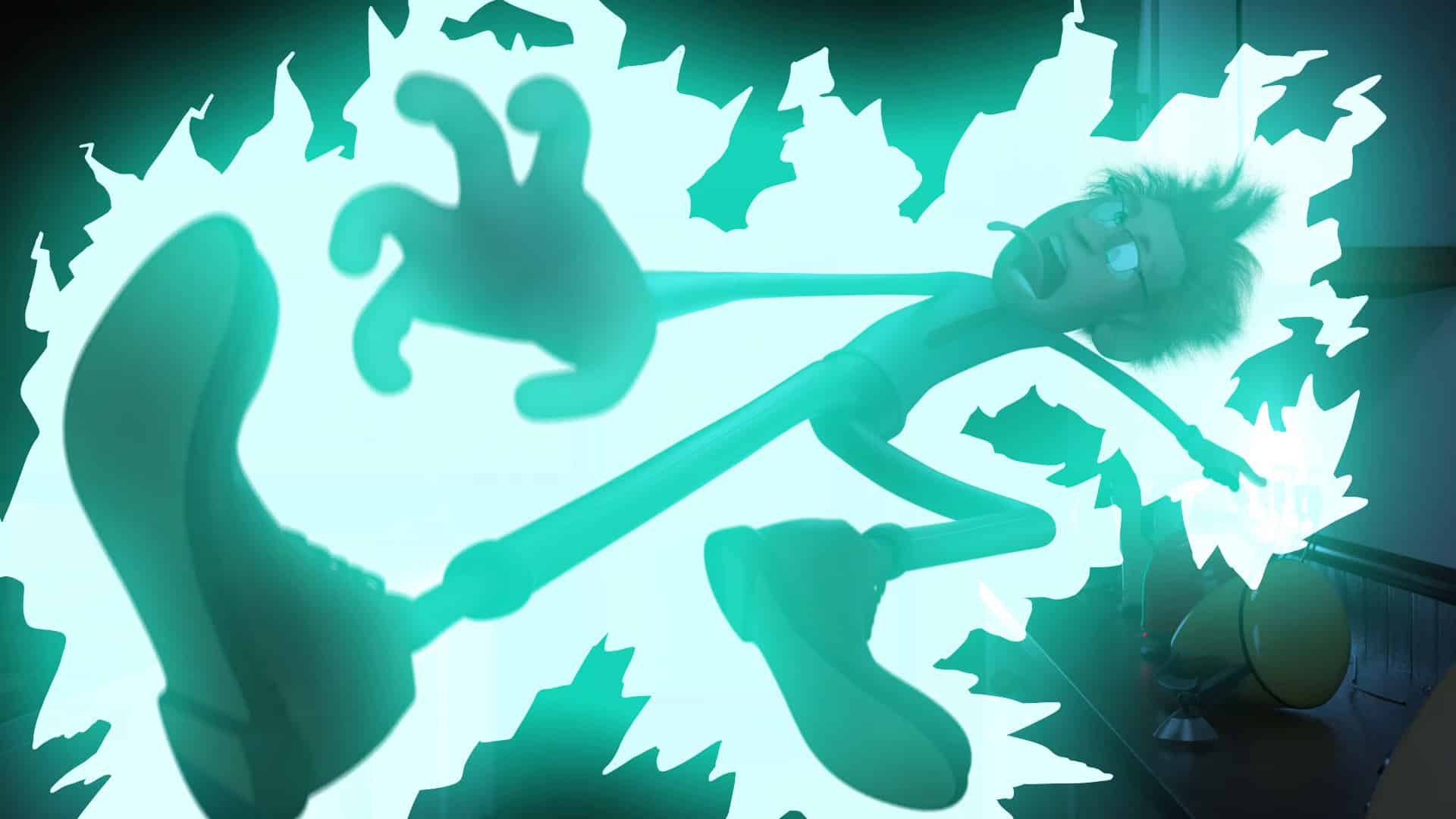
While there are some things they would do differently after making Coffee Run, Davies says he and the team are glad to have had the opportunity to bring some “Bomper originality and character to something new” while exploring so much without the pressure of a tight deadline. “The team did an awesome job; and all of that hard work helped the studio win a pitch for an ambitious 3D character animated music video,” he says, explaining that the project is currently in production and set to be released later this year. “We’re really excited to see the response to the film and to work on further 3D character animated films and commercials in the future.”
Meleah Maynard is a writer and editor in Minneapolis, Minnesota.


